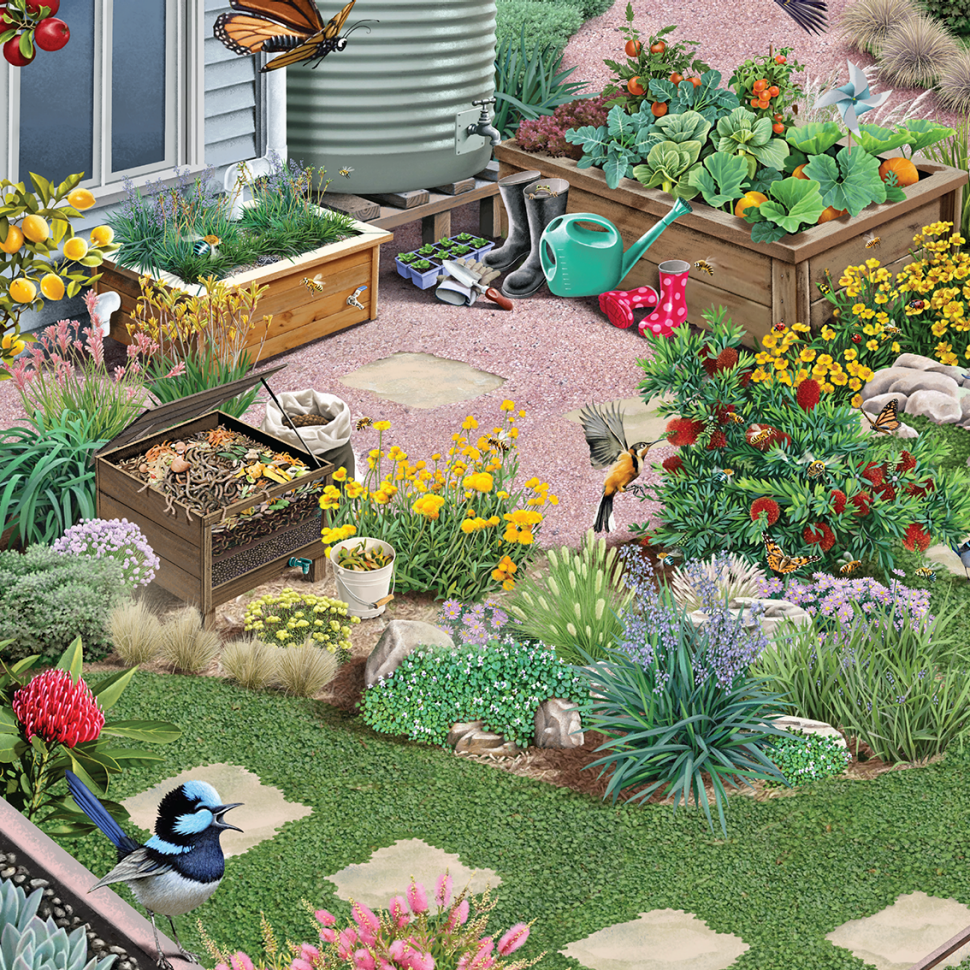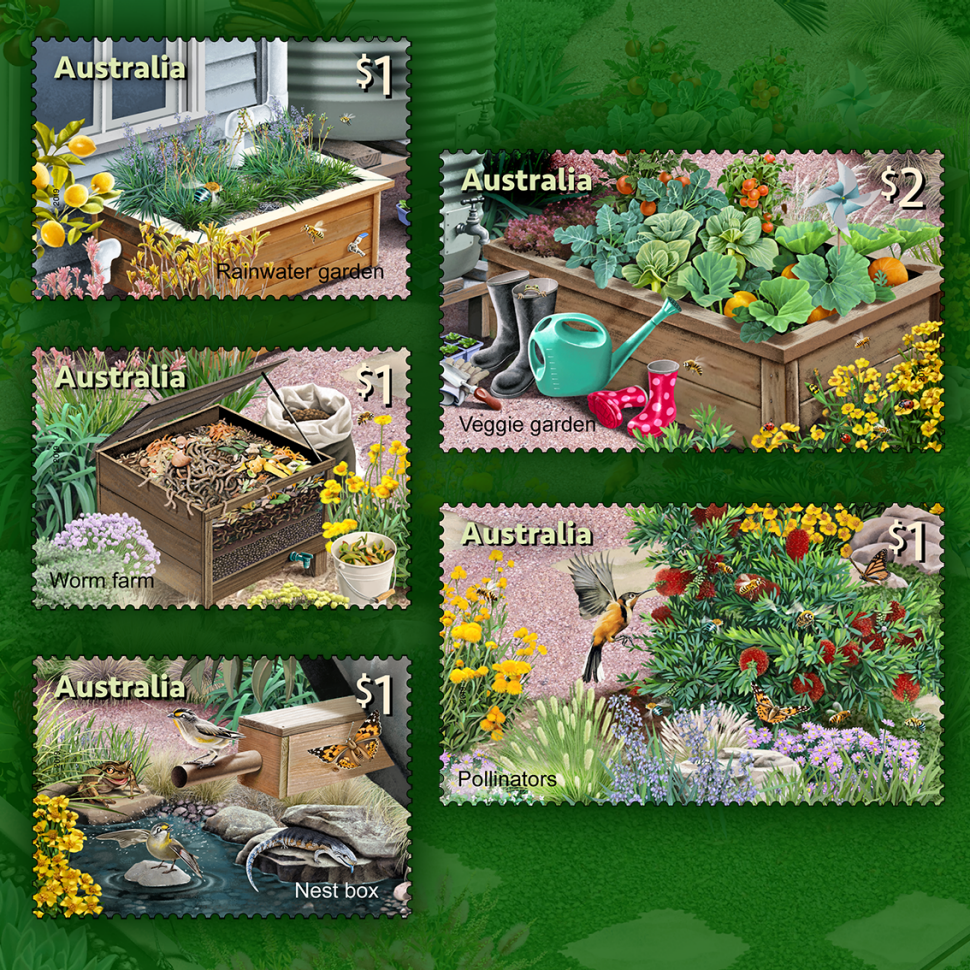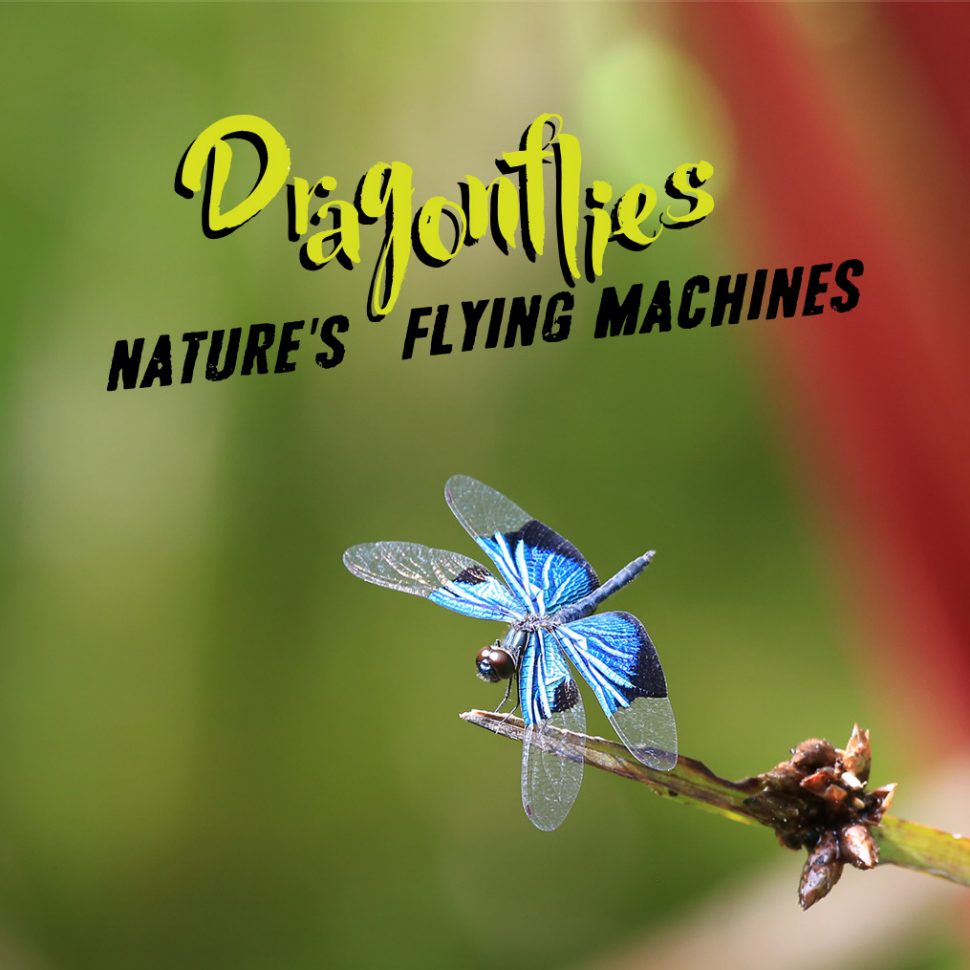Welcome to our sustainable garden scene, set in an Australian suburb with a mild climate. The garden includes perennial native trees, shrubs and groundcover plants that don’t require a lot of water and which attract helpful animal species, including birds and insects. Our garden is a thriving and inviting space where the whole family has fun with a range of sustainable gardening projects, including building and tending to a worm farm, rainwater garden, nest box and veggie patch, as well as going bird watching, hunting for worms, investigating the pond, and more.
Sustainable gardens are constructed and cared for in ways that minimise environmental impacts, encourage biodiversity and promote sustainable living. Sustainable gardening principles can be applied anywhere, whether in a residential garden, school kitchen garden or community garden – even in a small rooftop garden on an apartment building!
There are some key elements that help to make a garden sustainable and which also benefit the environment more broadly. Many of these elements have been reflected in the design of the In the Garden stamps and minisheet as well as the larger sheet contained within the sheetlet pack.
Planning and design
It’s good to ensure that lawn doesn’t take up more than half of the garden space (as many types of traditional turf require a lot of water). In our garden scene, instead of regular lawn, Dichondra has been planted. Dichondra is not a traditional turf lawn but a genus of perennial, herbaceous groundcover from the Morning Glory (Convolvulaceae) family that grows in both full sun and part shade. The stepping stone path to the house allows water to penetrate in between the pavers. On the roof, there are solar panels and a succulent garden – the latter helps to insulate and shade the house.
It’s best to avoid surfaces that don’t allow water to penetrate into the ground (such as concrete) in a sustainable garden and to designate areas to play or socialise that won’t disturb plants or wildlife.
There’s a hen house in the garden, with fresh eggs waiting to be collected. The hens have a fenced-off area in the garden to roam around, till the soil and have a dust bath, while keeping them away from other areas of the garden where they may do damage to plants and vegetable crops or eat valuable worms.
Biodiversity
It’s beneficial to include at least 30 per cent native or indigenous plants in a sustainable garden. To increase biodiversity, plants should be selected for their ability to provide food and shelter for pollinating bees, birds and butterflies as well as pest-eating birds, insects and reptiles. Nest boxes, spikey shrubs and ponds are good examples of ways to provide shelter and drinking water for wildlife.
A pond can be easily established in a backyard garden – whether by digging a recycled tub into the ground or any slightly sloping hole, lining it, filling it with water and surrounding it with rocks and grasses that attract frogs and lizards, which will help keep pests at bay.
In our garden scene, a Striated Pardalote (Pardalotus striatus) has come down from its nest box to have a swim and a drink in the pond. A Common Eastern Froglet (Crinia signifera) and some blue-tongue lizards (from the Tiliqua genus) are on the surrounding rocks, searching for insects. The Common Eastern Froglet is a widespread species of small ground-dwelling frog, with a cricket-like chirp. Species of blue-tongue lizard are found across Australia, aptly named for their flat, cobalt-blue tongue.
Birds, such as the brightly coloured Superb Fairy-wren (Malurus cyaneus), like spiky shrubs, where they can shelter and search for insects to eat, which in turn helps to control garden pests. The Superb Fairy-wren is a small species of bird, around 13 to 14 centimetres long and weighs only 10 grams. The male of the species is a brighter colour than the female, with rich blue and black plumage on and above the throat area. There’s one sheltering under our bright-red Bottlebrush (Castillemon) in the middle of our garden and another is happily perched near our roof-top succulent garden.
Plant selection
Plants should be selected to suit the climate and then grouped together based on soil, sun and water needs.
In our tree canopy, there’s a large gum tree that provides some shade and a flowering gum too. A lemon tree and apple tree form part of a kitchen garden, as does the raised veggie garden pictured on the Veggie Garden stamp. There are various dense shrubs, including Acacia acinacea, which is a nitrogen-fixing wattle species that improves soil quality and attracts pollinating birds and bees, and there are species of Waratah, Grevillea and Westringia.
Groundcover plants help to prevent weed growth and keep moisture in the ground. In this garden scene, there is Dwarf Mondo Grass (Ophiopogon Japonicus) and other native grasses (species of Poa, Danthonia and Themeda). There are pinkish-purple Brachyscome, a genus of native daisy that grows like a carpet along the ground, and a bright yellow Clustered Everlasting (Chrysocephalum semipapposum), both of which attract pollinating birds and insects.
Soil health
The earthworms that are tunnelling into the ground, burying organic material, cycling nutrients and improving drainage and fertility are a vital part of the soil health of the garden.
Adding organic fertilisers (such as compost, manure or liquid from a worm farm) helps the health of the soil, as long as it’s the right type of fertiliser for each particular plant type. It’s best to avoid digging too much or trampling through garden beds, as this disturbs the soil.
Waste management
Composting helps the environment because it diverts waste from landfill and the results can be used to feed and protect the garden. Recycled materials can be used to construct garden items such as raised beds, benches and even decorative sculptures. Mulch can be made from garden waste.
Our Worm Farm stamp shows how worms can compose waste to produce a nutrient-rich fertiliser for the garden.
Water use
In our sustainable garden scene, there’s a rainwater tank on the side of the house, which keeps the garden watered, as does household greywater. Soaker hoses, drip systems and tap timers all help control water use in a sustainable garden.
One of our stamp designs also includes a rainwater garden, which uses rainwater from the roof to keep it watered. The overflow is filtered to remove pollutants before entering the stormwater system.
Pest control
In a sustainable garden, pest outbreaks should be diagnosed correctly and rectified using an environmentally-friendly treatment option. Companion plants are a good way to deter pests, especially near veggie gardens or fruit trees. In our garden scene, marigold has been planted near the veggie garden, to attract pest-eating ladybirds, and there are flowering chives growing near the apple tree, to help prevent apple scab, a fungal disease.
Keen to learn more?
There are many community organisations and volunteer groups that exist to encourage and support sustainable gardening. Organisations such as the not-for-profit Sustainable Gardening Australia provide online guides and resources and run regular community workshops.
















